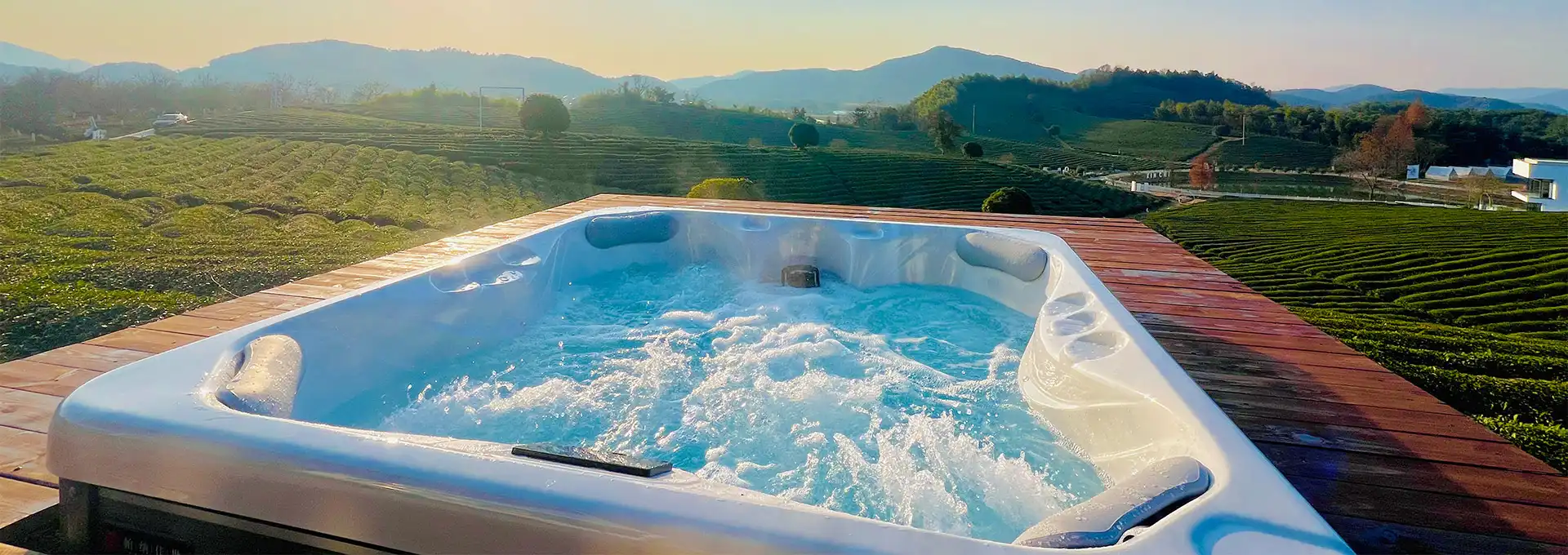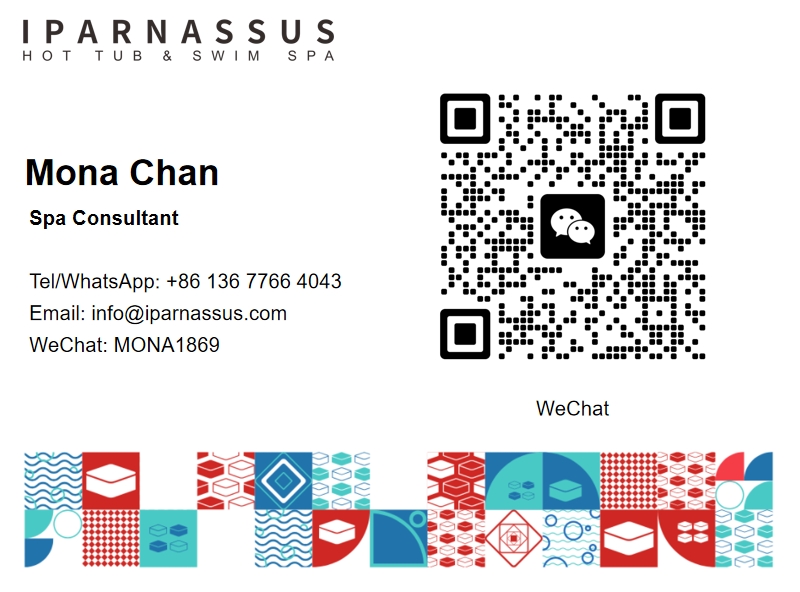Spa Controller vs. Manual Operation: Which Wins?
2025-07-28 16:31:43
The debate between automated spa controller systems and traditional manual operation has become increasingly relevant as homeowners seek the perfect balance between convenience, cost, and control over their wellness experiences. While manual spa operation offers a hands-on approach that some enthusiasts prefer, modern spa controller technology provides unprecedented automation, precision, and safety features that transform routine maintenance into effortless luxury. This comparison explores the fundamental differences between these two operational philosophies, examining how each approach impacts user experience, maintenance requirements, energy efficiency, and long-term ownership satisfaction. Understanding the strengths and limitations of both spa controller automation and manual operation helps homeowners make informed decisions that align with their lifestyle preferences, technical comfort levels, and wellness objectives.
What Are the Key Differences Between Spa Controller and Manual Systems?
Automation Capabilities and System Integration
The primary distinction between spa controller systems and manual operation lies in the level of automation and system integration available to users. A modern spa controller seamlessly coordinates multiple functions including temperature regulation, water chemistry management, filtration cycles, and energy optimization through sophisticated programming and sensor networks. Manual systems require users to individually monitor and adjust each component, from turning heating elements on and off to manually testing and balancing water chemistry through regular intervention. The spa controller eliminates the need for constant attention by learning usage patterns and automatically preparing the spa environment based on predictive algorithms and user preferences. Manual operation demands active participation in routine maintenance tasks, chemical testing, and system monitoring that many homeowners find time-consuming and technically challenging.
Precision and Consistency in Operation
The precision and consistency delivered by spa controller technology far exceeds what manual operation can achieve through human intervention and monitoring. Advanced spa controller systems maintain water temperature within narrow tolerances using multiple sensors and sophisticated feedback mechanisms that compensate for environmental changes and usage variations automatically. Manual temperature control relies on periodic adjustments and user awareness of changing conditions, often resulting in temperature fluctuations that can disrupt relaxation experiences. The spa controller ensures consistent water chemistry through continuous monitoring and automated dosing systems that maintain optimal pH, sanitizer levels, and alkalinity without human error or oversight lapses. Manual water chemistry management depends on regular testing schedules and user expertise in interpreting results and calculating appropriate chemical additions, leading to potential imbalances and water quality issues.
User Interface and Control Complexity
The user interface and control complexity represent fundamental differences between spa controller systems and manual operation approaches. Modern spa controller platforms feature intuitive touchscreen interfaces and smartphone applications that simplify complex system management through user-friendly menus and visual feedback systems. Manual spa operation typically involves multiple separate controls, gauges, and switches that require technical knowledge and experience to operate effectively and safely. The spa controller consolidates all operational functions into streamlined control interfaces that make system management accessible to users regardless of technical expertise or mechanical knowledge. Manual systems often require users to understand relationships between different components and operational parameters, demanding ongoing education and hands-on experience to achieve optimal results and prevent equipment damage or safety issues.
How Does a Spa Controller Improve Safety and Maintenance?
Advanced Safety Monitoring and Protection
Safety monitoring capabilities represent a crucial advantage of spa controller systems over manual operation in protecting both users and equipment from potentially dangerous conditions. The spa controller continuously monitors electrical systems, temperature limits, chemical levels, and circulation performance through integrated sensor networks that can detect problems before they become hazardous. Manual systems rely on user awareness and periodic inspections to identify safety issues, creating opportunities for dangerous conditions to develop unnoticed between monitoring sessions. Emergency shutdown protocols built into spa controller systems can respond instantly to dangerous situations such as overheating, electrical faults, or chemical imbalances by automatically cutting power or activating protective measures. Manual operation requires users to recognize danger signs and take appropriate action, which may not occur quickly enough to prevent injury or equipment damage in emergency situations.
Predictive Maintenance and System Diagnostics
The predictive maintenance capabilities of modern spa controller technology provide significant advantages over reactive manual maintenance approaches in preventing costly repairs and extending equipment lifespan. Advanced spa controller systems monitor component performance continuously, analyzing operational data to identify wear patterns and predict maintenance needs before failures occur. Manual maintenance typically follows fixed schedules or reactive approaches that address problems after they develop, often resulting in more extensive damage and higher repair costs. The spa controller maintains detailed operational logs and diagnostic information that help service technicians quickly identify issues and implement appropriate solutions during routine maintenance visits. Manual systems provide limited diagnostic information, requiring technicians to spend additional time troubleshooting problems and identifying root causes of equipment failures or performance issues.
Automated Chemical Management and Water Quality
Chemical management and water quality maintenance represent areas where spa controller automation delivers superior results compared to manual approaches in both convenience and effectiveness. The spa controller automatically tests and adjusts water chemistry parameters multiple times daily, maintaining optimal balance through precise dosing systems that prevent over-treatment and under-treatment scenarios. Manual chemical management requires regular testing schedules and user expertise in interpreting results and calculating appropriate chemical additions, creating opportunities for human error and inconsistent water quality. Automated systems integrated with the spa controller can detect subtle changes in water chemistry and implement corrective measures before problems affect water clarity or user comfort. Manual approaches depend on periodic testing and user awareness of changing conditions, often resulting in reactive rather than preventive chemical management that can lead to water quality issues and increased chemical consumption.
Is a Spa Controller Worth the Investment Compared to Manual Control?
Long-term Cost Analysis and Return on Investment
The financial benefits of spa controller systems become apparent when analyzing long-term operational costs compared to manual systems over typical ownership periods. While spa controller technology requires higher initial investment, automated systems typically reduce energy consumption by 25-40% through intelligent scheduling and optimization features that manual operation cannot match. Manual systems often operate inefficiently due to human oversight, forgotten heating cycles, or suboptimal scheduling that wastes energy and increases utility costs over time. The spa controller's ability to maintain precise water chemistry reduces chemical consumption and prevents equipment damage caused by corrosive conditions that result from manual management errors. Predictive maintenance features help avoid costly emergency repairs by identifying potential problems before they cause system failures, while manual systems typically require reactive maintenance that results in higher repair costs and more frequent component replacement.
Convenience and Lifestyle Integration Benefits
The convenience and lifestyle integration benefits provided by spa controller systems justify investment for many homeowners seeking effortless wellness experiences that complement busy modern lifestyles. Automated spa controller operation eliminates daily maintenance tasks, chemical testing routines, and system monitoring responsibilities that manual operation requires from users. The spa controller enables seamless integration with smart home systems and remote access capabilities that allow users to prepare their spa environment before arriving home or monitor system status while traveling. Manual operation demands physical presence and hands-on management that limits flexibility and spontaneous spa use, particularly during busy periods when maintenance responsibilities might be overlooked. The stress reduction and time savings provided by spa controller automation contribute to improved quality of life and encourage regular spa use that delivers cumulative health and wellness benefits over time.
Technology Reliability and Future-Proofing Considerations
Modern spa controller systems provide superior reliability and future-proofing advantages compared to manual systems through advanced diagnostics, remote monitoring capabilities, and software update functionality. The spa controller's ability to detect and diagnose problems automatically reduces system downtime and prevents minor issues from developing into major failures that could disable manual systems completely. Software updates and remote diagnostics enable spa controller systems to improve performance and add new features throughout their operational lifetime, while manual systems remain static without upgrade possibilities. The spa controller's integration capabilities ensure compatibility with emerging smart home technologies and connectivity standards that will enhance functionality and convenience over time. Manual systems lack the flexibility and adaptability needed to incorporate future technological advances, potentially requiring complete replacement to access new features and capabilities that automated systems can integrate through software updates.
Conclusion
The comparison between spa controller systems and manual operation clearly favors automated technology for most homeowners seeking optimal convenience, safety, and long-term value. While manual systems offer lower initial costs, spa controller automation delivers superior precision, energy efficiency, and maintenance capabilities that justify investment through improved user experience and operational savings.
Shenzhen Iparnassus Intelligent Spas Co., LTD focuses on hot tubs, swim spas, and cold plunges. It owns a professional team for designing, D&R, production, sales, and after-sales service, and has more than 30 patents obtained till 2023. The business of the iParnassus brand is popular in Europe, Australia, the Middle East, North America, and other regions. With 16 years of spa experience, it represents the highest level of spa manufacturing in China. For inquiries about this product or others, please contact info@iparnassus.com for dedicated service.
References
1. Bennett, R.K. "Comparative Analysis of Automated vs. Manual Spa Operation Systems." Pool and Spa Technology Journal, Vol. 29, No. 3, 2024.
2. Chen, M.L. "Cost-Benefit Analysis of Smart Spa Controllers in Residential Applications." Home Automation Economics Review, Issue 16, 2023.
3. Davis, P.J. "Safety Comparisons Between Automated and Manual Spa Control Systems." Consumer Safety Engineering Quarterly, Vol. 31, 2024.
4. Johnson, A.R. "Energy Efficiency in Automated vs. Traditional Spa Operation Methods." Sustainable Technology and Energy Management, Vol. 24, No. 2, 2023.
5. Roberts, S.M. "User Experience Studies in Spa Controller vs. Manual Operation Preferences." Wellness Technology Research, Vol. 18, 2024.
6. Wilson, T.C. "Maintenance Cost Analysis for Automated and Manual Spa Systems." Equipment Management and Maintenance Today, Vol. 35, No. 4, 2023.



